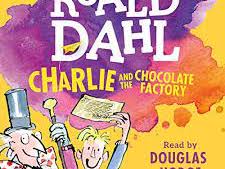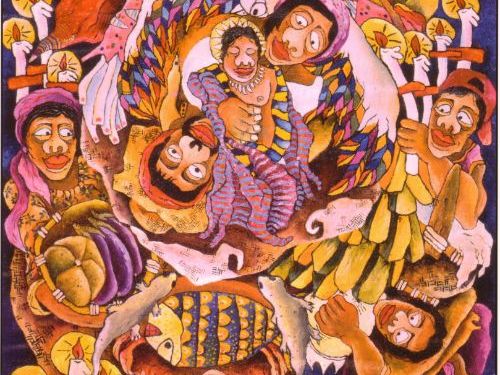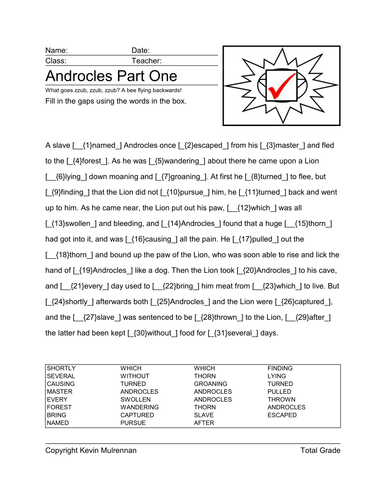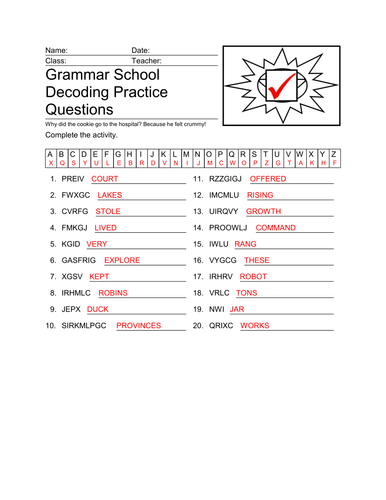421Uploads
152k+Views
49k+Downloads
English

Years 1 to 4 Complete Year's Religious Studies R.E. Planning
For all years 1 to 4 complete planning all terms.
Easily adaptable up or down, so will save you hours.
Catholic in flavour but other religions included.
Contains powerpoints, planning, worksheets, info etc.
Why not look at the bundles. Incredible value and it’ll save your precious Sundays.
Ideal if you have been chosen to deliver R.E.
N.B. You will need to spend some time organising as I am retired. Also not a great deal of year 2 stuff. If you want superorganised stuff, please look at my RE powerpoint stuff,
sample planning :
Learning and growing as the People of God:
Short-term Planning Unit I – Easter
Most children will know that the four Gospels contain accounts of the Resurrection of Christ. They will be able to understand the transforming effect this had upon the disciples. The children will know that the Ascension reminds Christians of the promise of Christ to remain always with them.
Less able children will be able to recall parts of the Resurrection story from some of the Gospels.
More able children will have a greater understanding of the importance of the Resurrection for Christians today and of their belief in the presence of Christ in the Church and in their lives.
Start date: Finish Date
Additional details including groupings, differentiation Vocabulary and
Key Questions Resources Prayer
Revise with children previous learning about the Church’s celebration of Easter.
Recall that it is a season of fifty days and revise some of the colours and symbols of the season that are used in the Church’s liturgy.
Activity:
In groups - give children the colours and the symbols to match.
White Easter light
innocence
purity
joy
triumph
glory
Red Feasts of the Lord’s Passion, Blood and Cross the Passion
blood
fire
God’s Love
martyrdom
Palm Sunday
Purple Good Friday penance
humility
melancholy
Gold Easter joy
Children to read one of the four Gospel accounts of the Resurrection:
Matthew 28: 1-15, Mark 16: 1-17, Luke 24: 1-43, John 20: 1-21
Group Activity:
Must - Highlight the words and actions of the disciples and the women and the words and actions of Jesus.
Should/Could -Create a resurrection appearance table. Include in the headings: What the disciples were doing, what they saw, and what Jesus said and did.
(Use the above Gospel accounts to fill in the table).
Plenary:
Children to imagine that they are about to meet somebody who had never heard of Jesus before. What would they tell this person about the resurrection? What would be the most important information that they would need to pass on?
What were the words and actions of ____ at the resurrection of Christ?
Markers Remind the children that prayer time is an
important opportunity for us to recognise
the presence of Jesus in our lives.
Provide moments for silent prayer. Use
music and appropriate Easter focus,
Use the Resurrection and Ascension
stories during Collective Worship.
Other links/Homework

Literacy Ideas Talk For Writing Wolves Emily Gavett
Nice powerpoint and notebook files and great grammar word document that you can use for display.

Charlie and the Chocolate Factory Planning Roald Dahl Literacy
Three weeks great planning. Don’t expect lessons on Charlie. It’s report writing in English using Charlie with powerpoints etc
Great powerpoints
Zip file has more. I’ve put some example stuff on to give you a flavour.
Introduce the new unit and read the writing outcome with the children.
Complete a skills audit verbally. TTYP – what skills do you already have that will help you to achieve the outcome? What skills do you think you will need to revise? Are there any completely new skills you will need?
Introduce the focus text. We know a lot about Roald Dahl from our biography unit. Has anyone ever read ‘Charlie…’?
Seen the films?
Explain that we need to know the story line and the characters, so we are going to spend today’s lesson using the 2005 film as a visual text. The rest of the week will be spent comparing the visual text to the written text and completing various activities and pieces of writing.
Become familiar with the story by using a visual text.
Use both visual and written texts to analyse character and setting descriptions. Finish any of the DVD which we didn’t finish yesterday.
Use the written text to read the character descriptions of Charlie, his parents, grandparents and the four other winners of golden tickets.
Activity One
Come back together, discuss and put information on working wall.
Repeat with setting descriptions.
Look at a still of Charlie’s house from the film and read the setting description for it.
Look at the still from the ‘meadow’ in the chocolate factory and read the description on pages 87-90.
Activity Two
Revise features of journalistic writing.
Compose a newspaper article using the correct form and language.
Working in pairs, children to sketch a story mountain onto a whiteboard. Children to then summarise ‘Charlie…’ using one or two sentences for each section of the mountain.
Come back together and discuss.
Read chapter five of the text. What main event is happening? The announcement of the golden ticket competition.
Watch 14:28 – 15:44 – how does the film embellish the details given in the book?
Explain today’s task, you are a senior news reporter for the ‘International Herald’ a newspaper which is published in many different countries, many different languages all over the world. Your editor has asked you to write a newspaper article about this event. Your report will be published the day after Willy Wonka’s signs went up. You will be reporting on the competition, the prizes and the mania sweeping the world.
TTYP – what are main features of a journalistic piece of writing?
Come back together and list for the working wall:
Headline, paragraphs, subheadings, quotations, orientation, 5 ws, past tense, direct, formal, balanced etc.
Brainstorm some headlines for our article.
List the 5 Ws on the working wall.
Give each child a checklist and an inverted pyramid.

Free Freebie Good Samaritan Lesson Simple and Effective for Year 4 R.E. Literacy
Got me a job so must be reasonable!
A simple lesson plan, worksheet, powerpoint.
Great for discusiing with pupils.
I have plenty of maths, literacy, languages and Literacy stuff so have a look after downloading this freebie.

Christmas Powerpoint Free Freebie Lesson Taster Advent Religious Studies
A freebie.
A nice powerpoint on the religious aspect of Christmas.
I’m hoping to interest you in buying my series of Christmas lesson on R.E.

Aesop Fable Cloze Test Androcles Classics Latin
A cloze test on an Aesop fable.
If you like this one I have a collection in my shop.
You get many, many more of them at a reasonable price.
Great timefiller for Froday afternoons or homework.
If you like the product, please leave a good review, especially as it’s FREE! Thank you!

Free Mega English Christmas Wordsearch Year 1 to Year 6
Tons more great resources at Auntieannie’s shop.
I specialise in Primary school stuff mainly.
Please have a look.
Tons of Literacy and Maths lessons and resources.
Religion a speciality too with a smattering of Humanities.
You can get planning for indivisual years and terms too.
Bundles offer incredible value. Lots of self made sheets.
Thanks for looking!

11+ Verbal Reasoning Decoding Vol 1 Maths KS2
I have designed 100 worksheets on decoding numbers for the 11+ non verbal reasoning questions. There are 100 worksheets provided on a cd. Decoding is an important aspect of the 11+ exams. Ideal for parents, pupils and tutors. Answer sheets provided. The Decoding worksheet helps to reinforce spelling and problem solving skills for students. The letters of each word are replaced with other letters or numbers based on a pattern. Students must translate the words and spell them correctly. You can see an answer sheet in my picture with the answers in red.

11+ Grammar School Synonym Questions Literacy 100 Worksheets with Answers
Synonyms are an important part of the 11+ grammar school exams. I have designed 100 worksheets on this area. I have chosen a group of over 600 words. There are 10 questions per sheets and pupils write a, b, c or d. The teacher will be able to have a lively discussion when going over the work with the pupils, discussing the meaning of all the words. Of course they can be used by not only grammar school pupils. They would suit anyone of the top end of primary, adults with learning difficulties or foreign students learning English.

Teaching Resources 100 worksheets Literacy Wordsearch KS2 English Language
I have designed 100 worksheets on Literacy word searches for primary school children. A wide variety of words used. Plenty of different directions to keep the kids guessing. I have used common English words. Ideal for 11+ preparation. Ideal for Literacy. Ideal for people learning English. Answer sheets are provided for all worksheets.
Bundle

Decoding Bundle 200 Worksheets Verbal Reasoning
A bundle of worksheets.
200 worksheets on decoding,
Plus some great ones on Pythagoras.
I have designed 200 worksheets on decoding numbers for the 11+ non verbal reasoning questions. There are 200 worksheets provided on a cd. Decoding is an important aspect of the 11+ exams. Ideal for parents, pupils and tutors. Answer sheets provided. The Decoding worksheet helps to reinforce spelling and problem solving skills for students. The letters of each word are replaced with other letters or numbers based on a pattern.

Christmas 2 Powerpoints Plus the Feast of the Epiphany
Two great powerpoints and some planning.
Nice powerpoint on Epiphany.
Sample :
Share the new targets with the children and explain that this is a short unit – two double lessons.
Read the story of Jesus’ birth from Matthew’s Gospel – Mt 1: 18-2: 23. Who are the main characters in this story? Concentrate on Mary, Joseph and King Herod.
Talk through the story. God had promised a saviour to free us all from our sins and he sent His only son into the world for us.
Talk about the priorities for any family when a baby is expected. (safety and comfort of the mother) .
Activity One
Come back together and watch scene featuring King Herod. Fear gripped King Herod, his mighty power was threatened. He gathered all the chief priests and scribes to see what they knew – they confirmed that Bethlehem had been foretold by the prophets. Herod launched his plan to locate the baby so that he could destroy him. What was Herod’s mistake? (look for the children to understand that Herod thought that Jesus would be an earthly King with a throne and a crown who was overthrow Herod).
What were Mary and Joseph’s feelings about the birth of the baby? Do you think they were scared? Happy? Relieved?
Children to TTYP and discuss – What does the birth of Jesus mean for us?
Jesus truly God and truly human has come down to Earth.
He brings peace, love and true freedom to those who seek him.
He opens the way to heaven for us.
He has come to save all people.
What does the birth of Jesus teach us?
God seeks those with an open heart to receive him.
If you truly seek God, He will find you.
It’s not money, wealth or knowledge that matters because God seeks the lowly and the humble who are looking for Him.

Iron Man Ted Hughes 4 Planning Sheets Year 6 Literacy
4 planning sheets.
Plenty of ideas.
Year 6.
Literacy.
Sample :
Set up plenary clip at beginning of lesson to be played in plenary
Imagination starter: display front cover of the Iron man on IWB – Tell pupils that we have a new topic surrounding the novel The Iron Man, and tell them we will find out more about the author and the story as the unit continues.
Round Robin: Can you write down describing words about the character you see? Place pupils into A/B and give 2 minutes to write down ideas on wipeboards in pairs. Feedback with lollypop sticks to follow. Draw out discussion as to what genre the book might be/ if the character is good/evil.
Read the first two pages to the class:
Hands up: Does the opening make them want to read on? Why? Collect ideas on IWB-
What is the effect of opening the story with questions?
Explain that the author Ted Hughes was primarily a poet rather than author-so he plays with his words/sentence length a lot more.
Note any important features of the text, which build up atmosphere and note on IWB. Choose an OPENERS card and set the class a challenge.
As core, but once they have completed highlighting, pupils are to label similes, metaphors, alliteration, repetition, rhetorical questions, short sentences…
Can I analyse the features of a good story opening and find poetic devices? Children are given a copy of the first 2 pages of The Iron Man to annotate. They highlight what parts of the text build up the atmosphere to make a good opening –and how this contributes to he overall style.
Can I analyse the features of a good story opening? Support lower going over each section of the text together. Read through again if necessary.
Can I analyse the features of a good story opening, with support?

Classic Narrative Poems Noyes Maggie and the Dinosaur Dave Ward The Works
Sample planning :
Genre: Poetry Unit 2 – Classic/Narrative poems.
Focus Texts: ‘The Highwayman’ by Alfred Noyes. ‘Maggie and the Dinosaur’ by Dave Ward.‘The Works’ (poetry anthology) by Paul Cookson. ‘The Puffin book of utterly brilliant poetry’ (Anthology) edited by Brian Patten.
Prepare to share a narrative poem from an anthology: Maggie & the Dinosaur, p463 in The Works by Paul Cookson.
Explain that an Anthology is a collection of poems specially chosen by a person: an anthologist.
Highlight that Narrative poems are poems which tell a story. Point out that not all narrative poems have the same structure although each poem will probably have its own! They often have many verses just like a song, with each verse telling the next part of the story.
Ask the children to respond to the narrative poem we shared. Which parts, lines & words did they enjoy the most? Did they like the way that the poem was read? Narrative poems are often long so they need to be read in a way that keeps the audience interested from start to finish. Just like a good story reader would make a story sound interesting.
Children to be split into mixed ability groups of four and given copies of two poems:
‘Dave Dirt’s Christmas presents’ and ‘GreedyGuts’ both by Kit Wright.
Ask the question: how can you be sure that you are looking at a narrative poem? They should decide which they would like to share with the class. How are they going to read it?
Altogether, in pairs, individually on rotation? Allow each group time & space to practice for presentation.
Groups to present their poems.
Other groups to offer constructive feedback.
Success Criteria:
I know that a narrative poem is one which tells a story.
I can contribute to a group activity, taking turns where necessary.

Back to School Autumn Planning Year 1 Massive Amount of Work Literacy Maths
Short of ideas for year one Autumn term?
Put my planning from different schools together.
It’s all in the zip file. I’ve put some examples in the general upload but there is TONS more in the included zip file.
Lots of different types of planning as my schools were all different.
There’s lots of free stuff too that is adaptable e.g. year 2 work.
sample :
Today we are going to read ‘Titch’ together. Read Titch under the visualiser. Does this remind you something that has happened to you? Can children identify with the characters/settings and events? Discuss with talk partners and beach ball/bean bag ideas.
Look at some cvc words; start with hen; who can spell this word on the IWB? What is the 1st sound? Get a child to write it down. Can you tell your talk partner some words that rhyme with this? Make a list. Robins/Bears [AA]
Talk about how Titch might feel. Do they feel like that?
Children to write sentence/s about how the children feel. Chicks/Giraffes [A]
Talk about how Titch might feel. Do they feel like that?
Children to write a sentence about how the children feel. Octopus [BA]
Talk about how Titch might feel. Do they feel like that? CT/TA to scribe some sentences about how the children feel. Listen to sentences that children have came up with about the story. Can we suggest any other sentences about ‘Titch’. Teacher to scribe them on IWB and save them for later.
Show chn the picture from the front cover of Lost and Found.
Start up a discussion asking the question: Who are they?
Depending on chns responses ask other questions – who, why, when, what, where, how.
Show chn question hand – use this to remind chn of the types of questions we can ask. PUT HAND AND PICTURE ON WORKING WALL FOR CHN TO REFER TO.
Model recording some responses to the questions asked on post it notes. Mild: Talk about the picture on the front cover
Spicy: Think of questions that we could ask to find out about the story
Hot: Share responses to the different questions asked
Extra Hot: Write responses making phonetically plausible attempts.
LA Activities
Green MA Activities
Orange and Red HA Activities
Blue
Adult pose a question about the picture. Adult to scribe responses on post it notes.
Photograph for books. Chn to talk about the picture with partner- Chn to remember some of the questions asked earlier and write down their responses to the questions.
Photograph for books. In pairs chn take it in turns to ask each other a question. Chn to write their responses on post it notes.
Stick post its and a smaller version of picture in book.

Romeo and Juliet Shakespeare Planning Powerpoint Year 5
Planning to teach Shakespeare’s play.
Great powerpoints.
Sample planning :
Begin by introducing the new topic and the learning outcome. We will be studying ‘older’ literature. Explain that older literature is defined as anything written before 1914 but we are going to look at much older than this!
Show a picture of William Shakespeare: children to TTYP –
Who is this man?
What is he famous for?
Can you name any of his works?
Come back together and elicit that William Shakespeare was an author – not of stories but of plays and sonnets (poems). Talk about some of his more famous work and explain that he wrote 38 plays and over 160 sonnets.
Shakespeare was born in 1564 and died in 1616. He produced most of his work between 1589 and 1613 – why do you think he wrote mostly plays rather than stories? Elicit that he was an actor so he loved the stage and he intended his works to be acted out rather than just read and also because of the times. TV and film were not entertainment options and the majority of people couldn’t read so going to the theatre or watching an outside performance was very popular.
List the main characters on the board, to include:
The Capulets
Juliet
Lady Capulet (Juliet’s mother)
Lord Capulet (Juliet’s father and head of the family)
Tybalt (Juliet’s cousin and enemy of Romeo)
Nurse (Juliet’s nanny)
Paris (wants to marry Juliet)
The Montagues
Romeo

Christmas Planning Year 5 Three weeks worth English Maths
Three weeks of planning. Plus you can use other planning included for free from different years.
Example
To analyse and create a character and setting description for 23 Degrees 5 Minutes North.
I can express verbally what a character may be feeling, thinking or doing I can explain why I think a character may feel, think or do something I can describe a setting using figurative language
Starter 5 mins
Pen portrait of key characters in 23 Degrees 5 Minutes North: Children mind map/annotate information about the key characters that they know so far around an image of The Adventurer and Professor Erit. They add information about the internal feelings, thoughts and emotions within and the external information such as physical description, or known facts
Activity 1 5-10 mins
Use key questions and discussion in groups to think about answers to questions such as: When is this story set? Who am I? Where am I? Why am I here? Will I be able to find Professor Erit? How will I find him?
Emphasise the importance of chn giving evidence to support their opinion when they give a response to these questions.
Activity 10 mins
Return to image of the Adventurer and Professor Erit. Using a different coloured pencil, chn should add information about these characters
Main 20 mins
Give chn an image of the setting and ask them to mind-map descriptive words, phrases or sentences they could use to describe the narrative setting.
Model using the different kinds of sentence-types to record a setting description, using the vocabulary recorder in the mind-map. Chn use sentences to build suspense if they can.

Spring Term 13 Weeks Literacy Year 6 plan 40 page pdf Big Write
13 weeks of Literacy plans for Year 6. Spring Term.
Includes
Biographical writing
To develop a narrative solution
Persuasive writing
There’s a nice Big Write.

15 Powerpoints Year 5 Morning Work. Great Starters English Maths
15 Powerpoints that you can have on the board as your class enters.
Nice easy start to the day.
Easily adaptable. Nice bits of Math and English.

Reception Short Term Lesson Plans 480 page pdf Year's Planning
480 page pdf.
Lots of little ideas for lessons.
Saves a load of planning.
sample :
Listen to stories with increasing attention and recall. [L&A]
Join in with repeated refrains and anticipate key events and phrases in rhymes and stories. [L&A]
Listen to stories, accurately anticipating key events and respond to what they hear with relevant comments, questions or actions. [L&A]
Read and understand simple sentences. [R] Remind chn about traditional tales: these were not written in books, they were TOLD. People remembered them and parents told them to their chn. Show/tell chn the story of The Gingerbread Man (see resources). Encourage chn to join in with repeating line, ‘Run, run, as fast as you can! You can’t catch me, I’m the Gingerbread Man.’ At the end of the story, write these sentences on f/c and then read them through together, matching words pointed to and said.
Join in with repeated refrains and anticipate key events and phrases in rhymes and stories. [L&A]
Listen to stories, accurately anticipating key events and respond to what they hear with relevant comments, questions or actions. [L&A]
Use language to imagine and recreate roles and experiences in play situations. [S]
Express themselves effectively, showing awareness of listeners’ needs. [S] Have pictures of the characters in The Gingerbread Man (see resources). Choose diff chn to be the diff characters in the story as you act it out from start to finish. Note 3 stages of the story:
Start: Mum makes gingerbread man & he runs away
Middle: Mum/dad/cow/horse chase gingerbread man to river
End: Fox carries gingerbread man over river and tricks him! Remind chn of the repeating phrase ‘Run, run, as fast as you can! You can’t catch me, I’m the Gingerbread Man.’ Use this phrase as you act out the story.




















